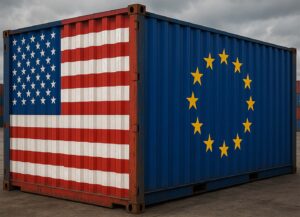U.S.-China Trade Deal: A Temporary Truce with Global Implications
On May 12, 2025, the United States and China unveiled a significant trade agreement in Geneva, marking a critical pause in their escalating trade war. Described as a “better-than-expected” breakthrough, the deal temporarily reduces tariffs for 90 days, lowering U.S. duties on Chinese goods from 145% to 30% and Chinese tariffs on U.S. products from 125% to 10%. This follows months of tensions that disrupted nearly $600 billion in bilateral trade, unsettled global markets, and raised fears of a worldwide recession.
Negotiated by U.S. Treasury Secretary Scott Bessent, U.S. Trade Representative Jamieson Greer, and Chinese Vice Premier He Lifeng, the agreement establishes a consultation mechanism to tackle ongoing economic issues. While specifics remain limited, it excludes changes to the U.S. termination of “de minimis” exemptions for low-value e-commerce shipments and retains 20% fentanyl-related tariffs. Both sides praised the talks as “constructive,” with Bessent highlighting a shared interest in balanced trade and He describing it as an “important first step.”






